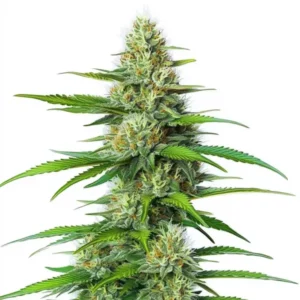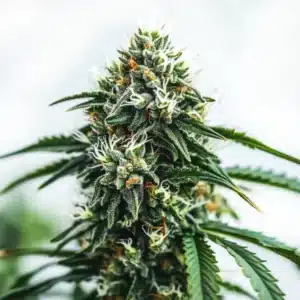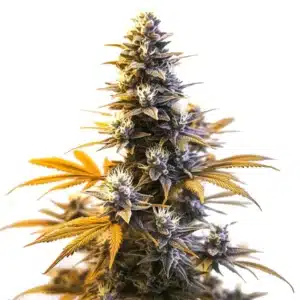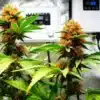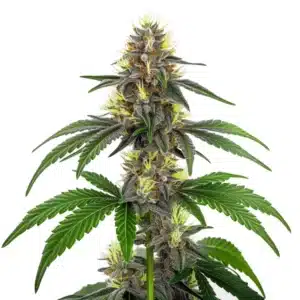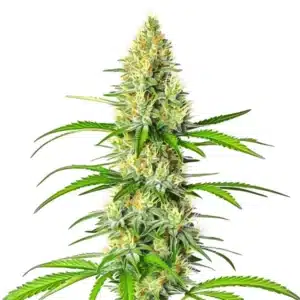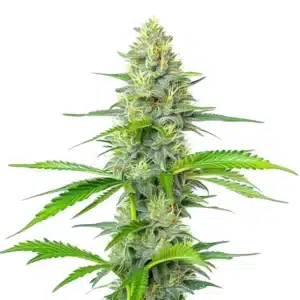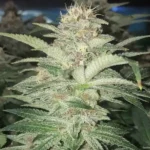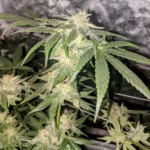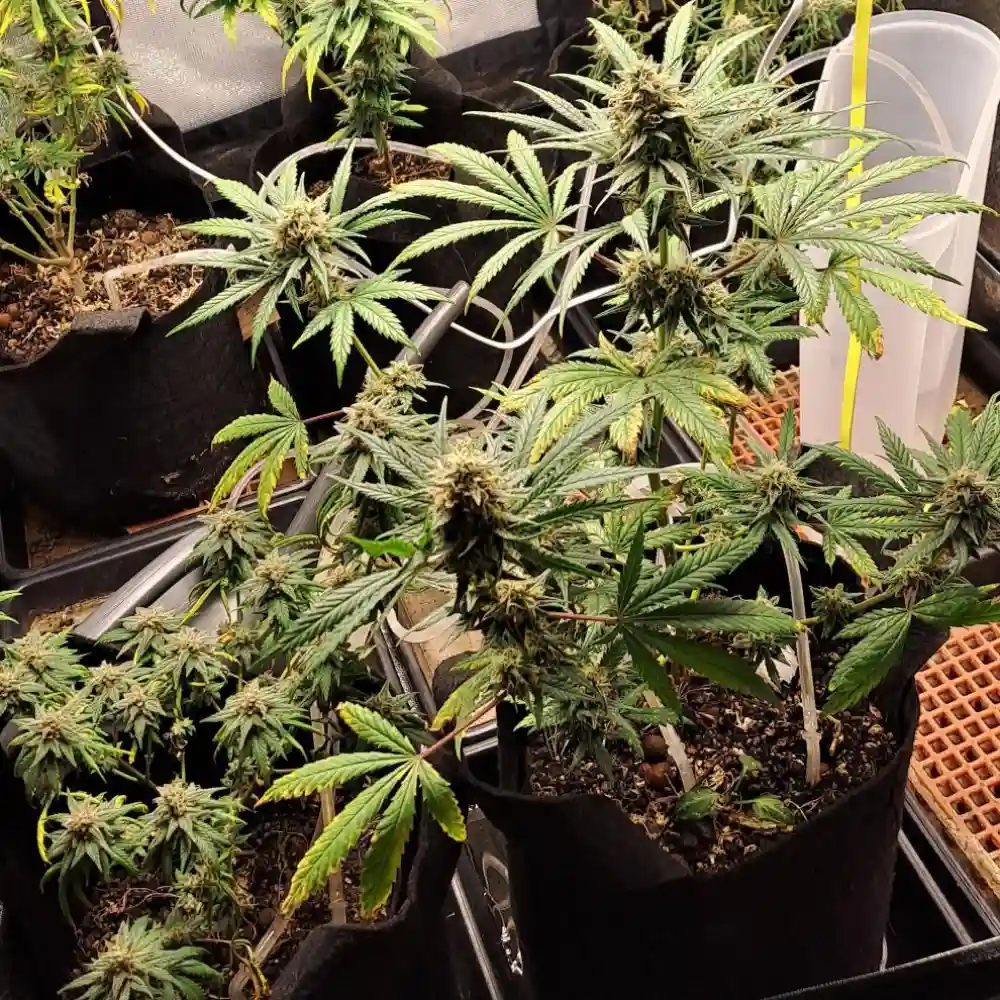
How to Grow White Widow Regular Strain
White Widow Regular Strain Description
The White Widow Regular is considered high due to its potent, well-balanced effects and a history of awards. White Widow’s rank among cannabis strains remains impressive thanks to its high THC levels (around 20–25%) and its popularity among both recreational and medicinal users for its euphoric, energetic, and uplifting yet relaxing high.
White Widow Regular Strain typically features medium to dense buds with a balanced mix of light green and brown hues. The flavor profile is a delightful mix of herbal, sweet, and fruity notes, making each puff of White Widow enjoyable. With THC levels ranging from 18% to 24%, White Widow provides a potent and uplifting effect while maintaining a relaxed body high, making it a versatile choice for a range of cannabis enthusiasts.
Recommended Strains
White Widow Regular
|
|
THC | 18% - 24% (Medium) |
|
|
Type | Regular |
|
|
Yield | High |
|
|
Phenotype | 40% Indica / 60% Sativa |
White Widow Fast Version
|
|
THC | 15% - 20% (Medium) |
|
|
Type | Fast Flowering |
|
|
Yield | Medium |
|
|
Phenotype | 60% Indica / 40% Sativa |
Promos & Deals
Environmental Requirements for Growing White Widow Regular
Growing White Widow Regular Strain successfully involves creating an environment that meets its specific needs. This strain thrives in moderate temperatures, ideally between 70-80°F (21-27°C) during the day, with slightly cooler temperatures at night. The key is to keep conditions stable, as rapid fluctuations can negatively affect plant health. Additionally, a relative humidity level between 40-50% is ideal during the vegetative phase, gradually decreasing to 30-40% during flowering.
Indoor growers should use high-quality LED grow lights or HPS lamps to ensure proper photosynthesis and development of dense buds. For auto flowering indica strains like White Widow Regular, an 18-20 hour light schedule during the vegetative stage works well, while a 12/12 light cycle is required to initiate flowering. Maintaining adequate airflow and ventilation within your growing space is essential to prevent mold and mildew, ensuring that your plants stay healthy and produce high yields.
For outdoor cultivation, the white strain flourishes in warm climates with consistent sunlight. The plant can reach a height of up to 4.92 ft (1.5 m), so choosing a location that allows ample room for vertical growth is important. In cooler climates, a greenhouse setup can provide additional warmth and protection, helping to extend the growing season and improve your harvest results.
Setting Up the Growing Space for White Widow Regular Strain
Indoor Cannabis Cultivation
Setting up an ideal growing space indoors is crucial for maximizing White Widow Regular yields. A grow tent or dedicated grow room with reflective materials such as Mylar sheets helps optimize light distribution. Proper ventilation is key; an exhaust fan with a carbon filter ensures good airflow, removes excess humidity, and helps control odor, which can be significant during the flowering phase.
White Widow Regular can be grown in either soil or a hydroponic system. High-quality organic soil with good drainage is ideal for beginners, providing a forgiving medium that buffers nutrients well. Ensure that the pH of your growing medium stays between 6.0 and 6.5 to facilitate optimal nutrient uptake. Installing a drainage system helps prevent root rot, which can occur if the roots are left in standing water.
Outdoor Cannabis Cultivation
For outdoor growers, selecting a sunny location with nutrient-rich soil is essential. White Widow Regular performs best in well-draining soil that contains plenty of organic matter. Consider using fabric pots or large containers for better control over soil quality and root growth. Outdoor plants benefit from using stakes or trellises for support, which prevent branches from snapping under the weight of heavy buds and ensure better airflow through the canopy.
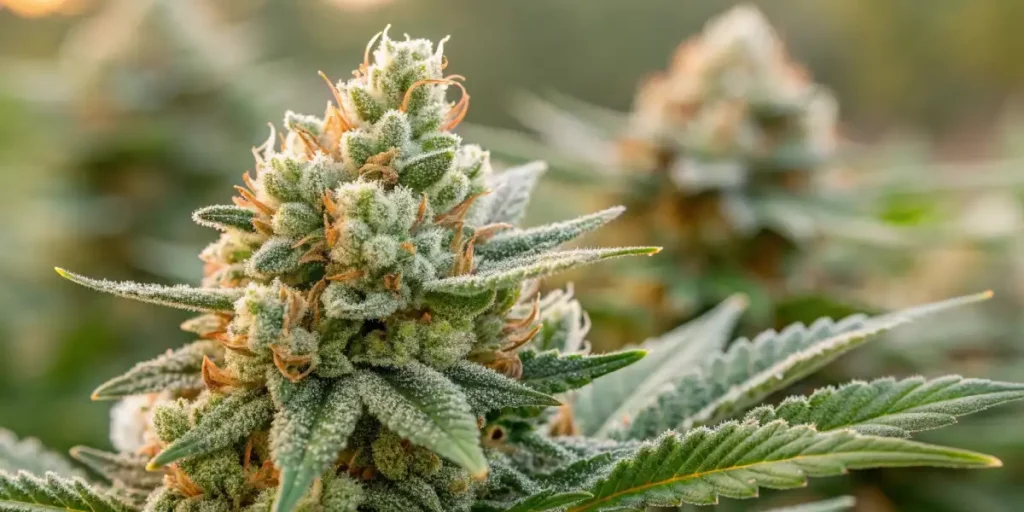
Propagation and Germination of White Widow Regular Seeds
For successful germination, start by sourcing high-quality White Widow Regular seeds. These seeds are known for their stability and high germination rates. Begin by soaking the seeds in distilled water for 24-48 hours or use the paper towel method. The seeds need to be kept in a warm, dark place, ideally between 70-85°F (21-29°C) to ensure optimal sprouting.
Once taproots have formed, transfer the germinated seeds into a well-aerated growing medium, such as seedling starter mix or a light potting soil, ensuring that the medium is kept moist but not waterlogged. White Widow Regular seedlings need indirect light during the first few days, with a gradual increase in light intensity as they mature. This helps prevent stress and encourages strong initial growth. Maintaining a humidity level of 60-70% during germination will further boost success rates, providing young seedlings the moisture they need for vigorous growth.
Vegetative Phase of White Widow Regular Strain
During the vegetative phase, White Widow Regular experiences rapid growth, developing strong stems and lush foliage. Ensure your plants receive at least 18-20 hours of light each day, with LED or HPS grow lights providing the best results. The vegetative stage is when White Widow builds the foundation for future yields, making it crucial to maintain proper nutrition.
Fertilize with a nitrogen-rich nutrient solution to support robust vegetative growth, following the manufacturer’s recommended dosage. Be sure not to overfeed, as this can cause nutrient burn, stunting plant development. Watering should be done when the top inch of soil feels dry. Avoid overwatering, as excess moisture can lead to root problems like rot.
Consider training techniques such as low-stress training (LST) or topping to promote an even canopy and maximize light penetration. These methods encourage lateral growth, resulting in more bud sites and increased yield potential. Additionally, prune any lower leaves or branches that do not receive sufficient light to improve airflow and focus the plant’s energy on the top growth.
Flowering Phase of White Widow Regular Strain
The flowering phase is when White Widow Regular shows its true beauty, with buds becoming dense and covered in a frosty layer of trichomes. To initiate flowering, reduce the light cycle to 12 hours of light and 12 hours of darkness. This change in photoperiod triggers the plant to start producing buds.
During flowering, switch to a nutrient formula with higher phosphorus and potassium content to support bud formation, especially if you’re growing the After Dark weed strain. Maintain stable temperatures between 65-75°F (18-24°C) and keep humidity levels lower (around 40-50%) to reduce the risk of mold. As the buds grow, they may become heavy, requiring support to prevent branches from breaking. Using stakes or trellises helps the plant bear the weight of the developing buds, ensuring they continue to grow without damage.
The flowering period for White Widow Regular typically lasts between 8 to 10 weeks. To determine the right time for harvest, monitor the trichomes—when they turn milky with some amber, the buds are ready for harvest, providing a well-balanced effect between potency and flavor.
Cannabis Fertilization and Nutrition
Providing White Widow Regular with the right nutrients is crucial for its health and final yield. During the vegetative phase, a nitrogen-heavy fertilizer supports vigorous growth, while during flowering, phosphorus and potassium become more important to enhance bud production and resin development.
Supplements such as bloom boosters and organic additives like kelp extract or molasses can be beneficial in boosting bud size and quality. Be cautious with nutrient concentrations—start with a lower dosage and gradually increase to prevent nutrient burn. It’s also essential to flush your plants with plain water during the last two weeks of flowering, which helps remove any excess nutrients and results in smoother-tasting buds.
Pest and Disease Control for Growing White Widow Regular
Although White Widow Regular is known for its resilience, it is still vulnerable to common cannabis pests and diseases. Regular inspection of your plants is key to early detection and prevention. Common pests include spider mites, aphids, and thrips. Introducing beneficial insects, such as ladybugs, can help control these pests naturally.
Maintaining proper airflow and humidity levels is also essential for preventing mold and mildew, which can devastate your plants, particularly during the flowering phase. Ensure your growing area is clean, and remove any dead plant material that could harbor pathogens. If you do spot signs of pests or disease, act quickly by using organic pest control methods like neem oil or insecticidal soap to minimize damage.
Harvesting and Curing White Widow Regular Strain
Harvesting White Widow Regular Strain at the right time ensures the best balance of potency, flavor, and aroma. Check the trichomes with a magnifying glass—once they turn mostly milky, with some amber trichomes, it’s time to harvest. Use sterilized scissors to cut the branches, taking care not to damage the buds.
Hang the branches upside down in a dark, well-ventilated area with a temperature of 60-70°F (15-21°C) and humidity around 50-60%. The drying process usually takes about 10-14 days. After drying, the buds should be cured in airtight jars, stored in a cool, dark place. Open the jars daily for the first week to release excess moisture, and then less frequently afterward. Curing can take 2-4 weeks, allowing the buds to reach their full potential in terms of flavor and smoothness.
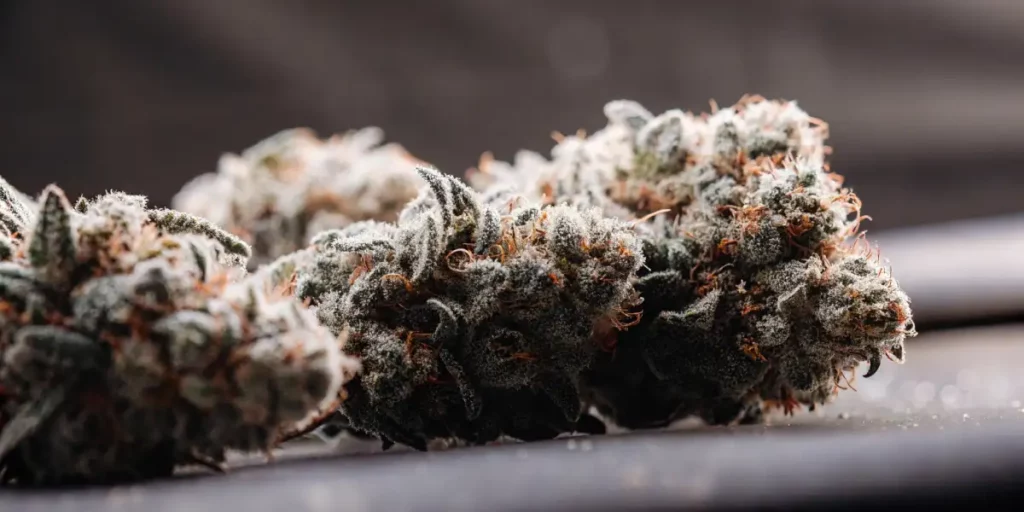
Is White Widow Regular Strain Indica or Sativa?
White Widow Regular is a mostly Indica strain, resulting from a cross between Indian and Brazilian landrace strains. While it has predominantly Indica genetics, its effects are well-balanced, offering both a cerebral, uplifting high and a deeply relaxing body sensation. For growers, White Widow is also available as autoflower cannabis seeds, making it a versatile choice for those seeking a strain that combines the best of both worlds.
Advantages of Growing White Widow Regular Strain
- High THC content, providing potent effects.
- Resilient plant, suitable for beginners.
- Rich flavors, combining fruity, herbal, and sweet notes.
- Adaptable to both indoor and outdoor growing environments.
- Short flowering time of 8-10 weeks.
- Good resistance to pests and diseases.
Disadvantages of Growing White Widow Regular Seeds
- Strong odor during flowering, requiring odor control measures.
- Requires consistent monitoring of nutrient levels to prevent burn.
- May need branch support due to heavy buds.
- Outdoor growers in cooler climates may face challenges without additional protection.
Why Buy White Widow Regular Strain
White Widow Regular Strain stands out for several reasons:
1. Potency: With THC levels between 18% and 24%, White Widow offers powerful effects that appeal to both recreational and medicinal users.
2. Flavor and Aroma: The delightful combination of fruity, hashish, and herbal notes makes White Widow a flavorful choice.
3. Medicinal Benefits: White Widow is often used to relieve symptoms of pain, insomnia, and arthritis, providing both mental and physical relaxation.
4. Grower-Friendly: This strain is beginner-friendly, adaptable to different growing methods, and offers high resilience to pests and diseases.
5. Versatility: Suitable for both indoor and outdoor cultivation, White Widow provides a rewarding experience for growers seeking a reliable and high-quality strain.
Common Problems in Growing White Widow Regular
Like all cannabis strains, White Widow Regular comes with some challenges:
1. Nutrient Imbalances: Overfeeding or underfeeding can cause issues such as nutrient burn or deficiency. Regularly monitor pH and nutrient levels to avoid these problems.
2. Pests: Spider mites and aphids can infest White Widow plants. Introduce beneficial insects or use organic pest control measures to protect your crop.
3. Odor Management: The strong odor during flowering may require carbon filters or other odor control methods, especially for indoor growers.
4. Environmental Stress: Fluctuations in temperature or humidity can stress the plants, leading to slower growth or bud issues. Keep conditions stable for the best results.
Similar Strains
- Super Silver Haze: A Sativa-dominant strain known for its uplifting and energizing effects, suitable for those looking for a more cerebral experience.
- Northern Lights: A classic Indica-dominant strain offering deeply relaxing effects and easy growth, similar to White Widow in terms of resilience.
- Blue Dream: A balanced hybrid with both uplifting and relaxing effects, perfect for users seeking versatility similar to White Widow.
Tips for Professional Growers
- Consider using advanced techniques like SCROG (Screen of Green) to maximize yields by improving light penetration to lower bud sites.
- Utilize CO2 enrichment in your grow room to increase photosynthesis and boost bud production.
- Monitor trichome development closely during flowering to harvest at the optimal time for maximum potency and flavor.
- Integrate beneficial microbes into your feeding regimen to improve root health and nutrient absorption, which is crucial for maximizing plant potential.
FAQs
How long does it take for White Widow Regular to flower?
The flowering phase for White Widow Regular typically lasts between 8 to 10 weeks, depending on the growing environment and specific phenotype.
What kind of yield can I expect from White Widow Regular?
Indoor growers can expect medium to high yields, while outdoor plants often produce larger harvests when provided with optimal conditions.
Is White Widow Regular suitable for beginners?
Yes, White Widow Regular is considered a beginner-friendly strain due to its resilience to pests and forgiving nature regarding growing conditions.
What effects can I expect from White Widow Regular?
White Widow provides a balanced high, combining uplifting cerebral effects with a relaxing body sensation, making it suitable for both recreational and medicinal use.
Does White Widow Regular have a strong odor during cultivation?
Yes, White Widow Regular has a strong and distinctive aroma, especially during the flowering stage. Proper odor control is recommended for indoor growers.


